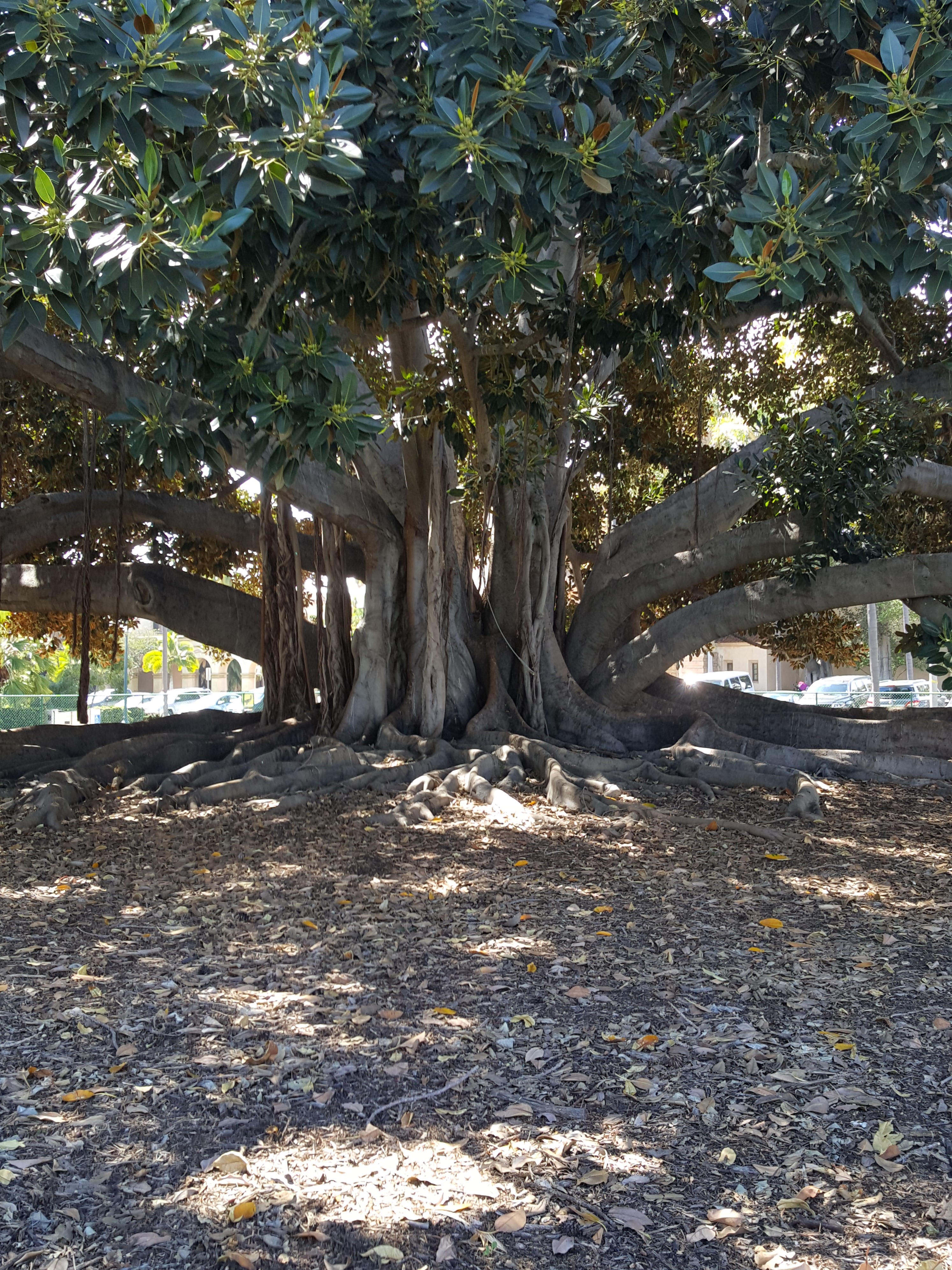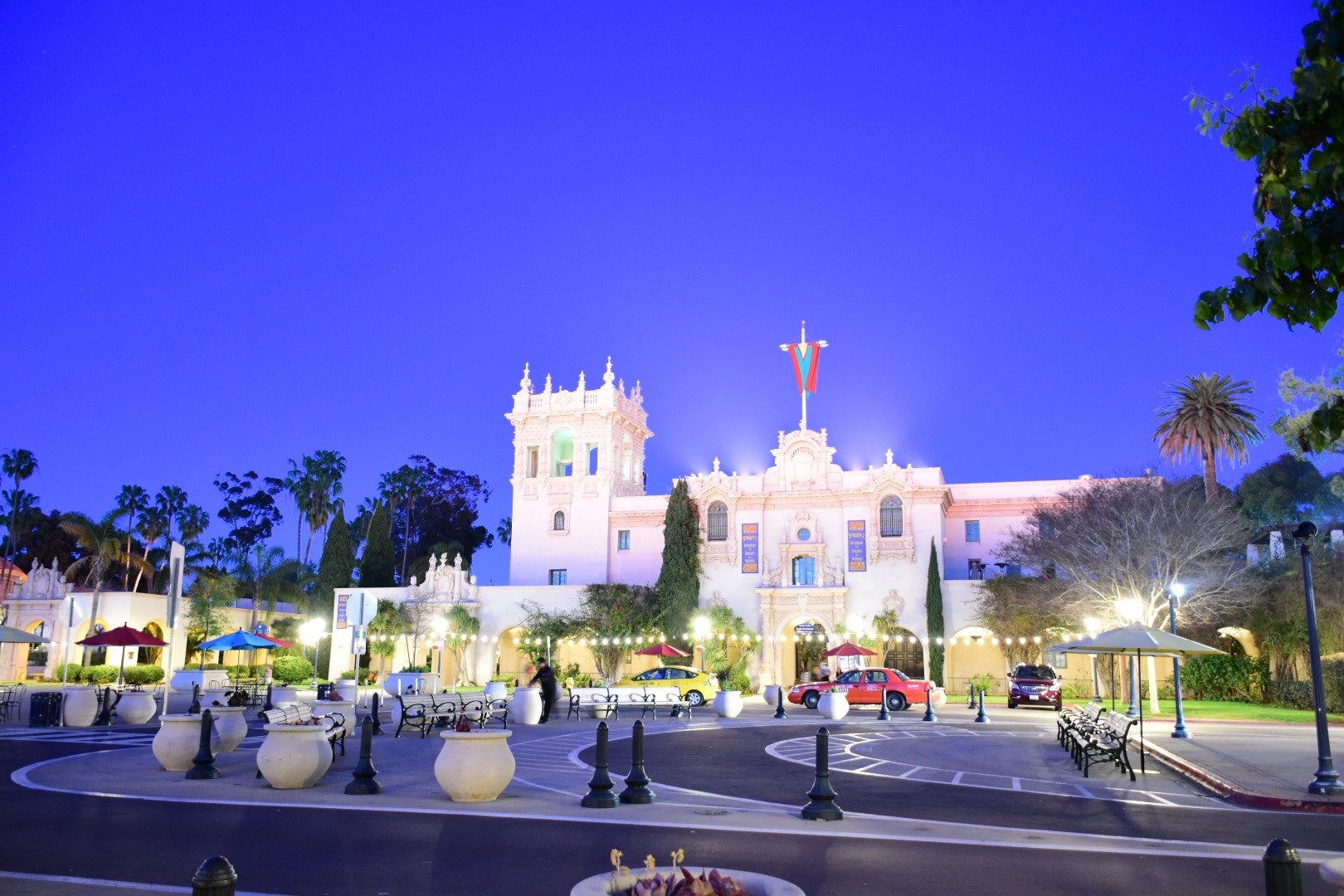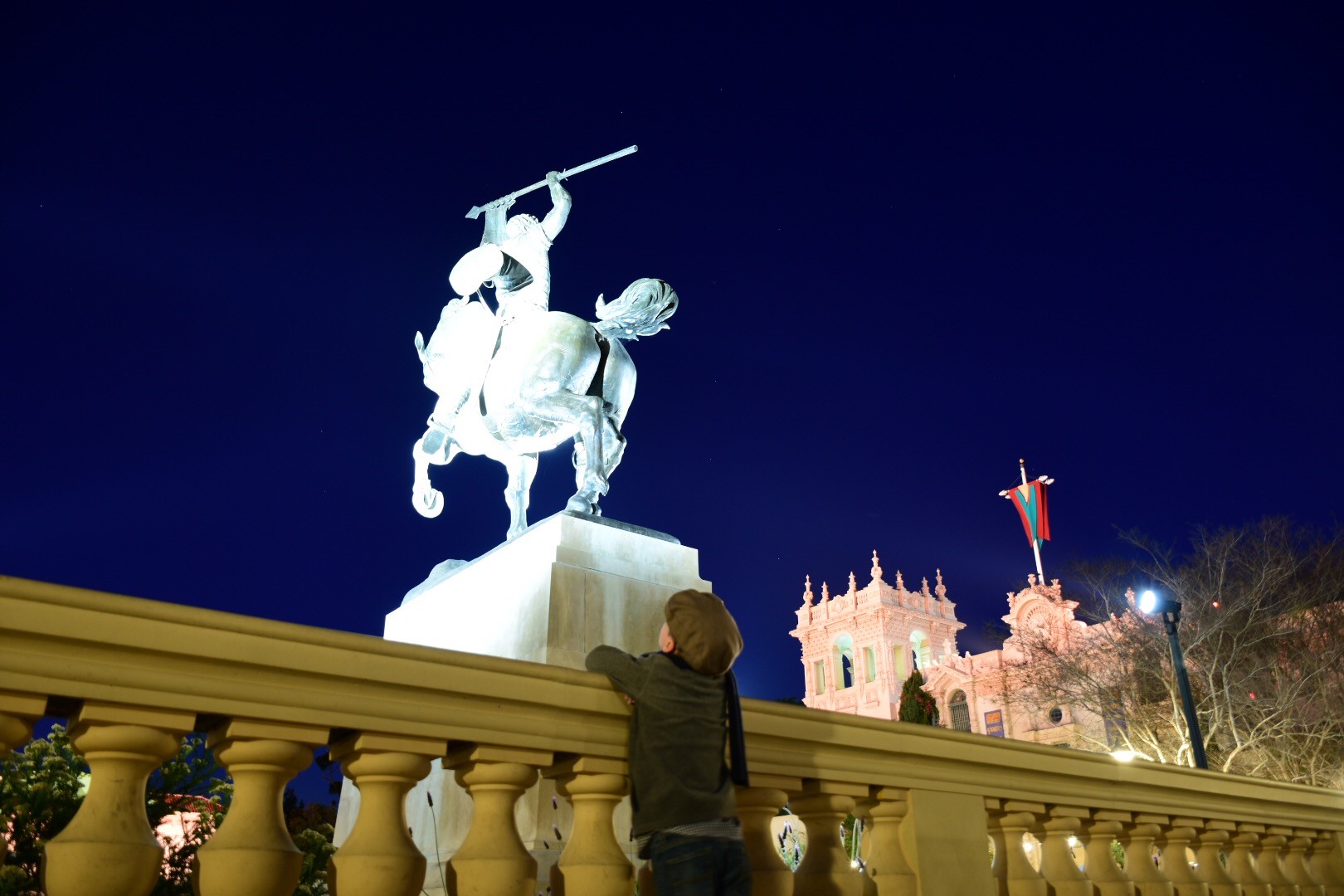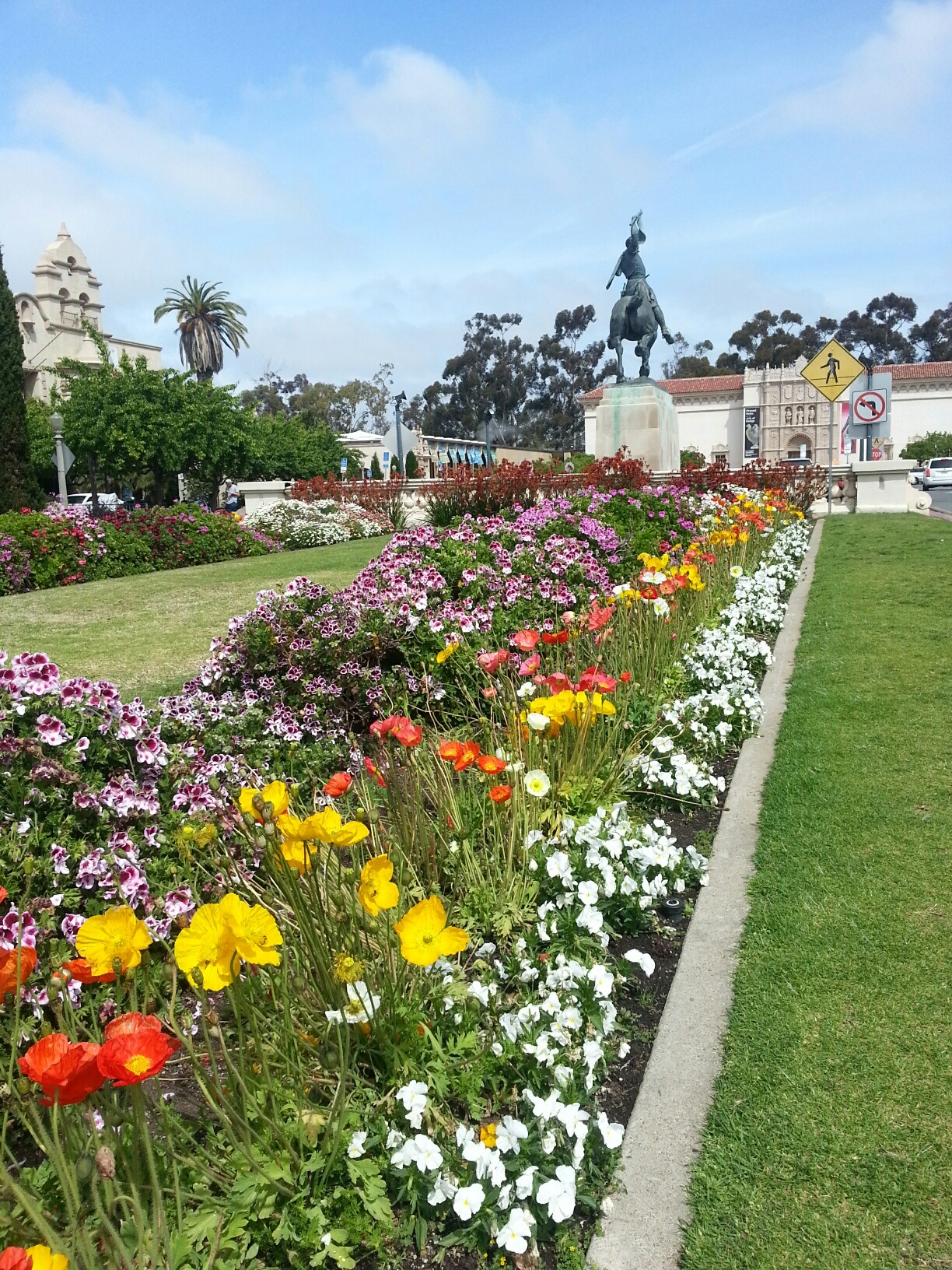Balboa Park
Balboa Park is more than 1,000 acres and offers 15 museums, various gardens, arts and international culture associations, and the San Diego Zoo. It offers something historical, horticultural, educational and recreational for everyone.
Approximately 14 million visitors come to the park each year. Displays of internationally significant art treasures, exotic animal species, unique model railroads, world folk art, sports memorabilia and rare aircraft -to name a few- are on view in the park's museums.
This urban park, just minutes away from downtown San Diego, is also renowned for its brilliant displays of seasonal flowers, shady groves of trees and meandering paths through rolling lawns. Balboa Park is managed and maintained by the Developed Regional Parks Division of the City of San Diego Parks and Recreation Department.
Many museums along Balboa Park's Prado are housed in magnificent Spanish Colonial Revival buildings, originally constructed for the 1915-1916 Panama-California Exposition. This richly decorated, highly ornamental architectural style was the first time used in the United States.
Discounted admissions to Balboa Park's major museums are available through the Balboa Park Explorer. Park museums also offer free admission one Tuesday per month on a rotating basis.
The Old Globe Theatre, San Diego's largest arts organization, is located in Balboa Park. On its three stages, the Globe annually presents at least 14 productions and 550 performances.
The rich ethnic diversity of San Diego is reflected in the Park's institutions:
- Centro Cultural de la Raza.
- World Beat Center (celebrating cultures of African origins).
- San Diego Museum of Us anthropological museum.
- Mingei International Museum.
- Japanese Friendship Garden.
- House of Pacific Relations - 17 cottages that are home to groups of diverse national origin.
Balboa Park's sports complex is named after John Morley, who was Park Superintendent from 1911-1939, years that encompassed two international expositions that were so crucial to the development of the park. The facilities at Morley Field include USTA-awarded tennis courts, a velodrome (bicycle track) where masters world cup championships are held, a swimming pool and a disc golf course.
Balboa Park also offers many family play and picnic areas, three leash-free dog parks, lawn bowling, canyon trails for hiking and a golf course.
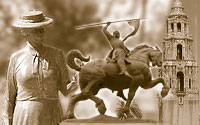
On May 26, 1868, a 1,400-acre tract of nine City pueblo lots was set aside as a public park by the Board of Trustees of the City of San Diego following the recommendations of a far-sighted citizens committee. The California Legislature ratified the grant on Feb. 4, 1870, when San Diego's population was 2,301 people, and there were only 915 houses. For much of the remainder of the 19th century, the area then known as "City Park" remained a fairly wildland preserve of hilltops, canyons and arroyos, forever preserved for future generations of San Diegans and visitors.
In 1892, Kate O. Sessions, San Diego's patron saint of horticulture, asked City officials to lease 30 acres of "City Park" to her for a nursery. In return, she would plant 100 trees annually throughout the park and donate others to the city for planting elsewhere. With Kate Sessions' vision, brushwood and rocky dirt were transformed into tree-shaded lawns, flower gardens, and hillside nature paths.
By 1902, a Park Improvement Committee had been formed and raised funds to employ Samuel Parsons, a landscape architect, to draw up a comprehensive plan for the Park. Funds were raised, and planting development continued, and by 1910, the parkland began to look much as it does today. To find a more suitable name, a contest was held, and the winner was Mrs. Harriet Phillips, a member of the Pioneer Society; her suggestion of "Balboa" to honor the famous Spanish explorer Vasco Nunez de Balboa, who was the first European to see the Pacific Ocean.
The continuing development and "building" of Balboa Park owe much to two world fairs: the Panama-California Exposition of 1915-16 and the California Pacific International Exposition of 1935-36. These two events marked the beginning and continued development of the cultural park's center we see today.
The theme of the 1915 Panama-California Exposition was to celebrate man's progress and achievements. The Cabrillo Bridge and most of the cultural center "buildings" along El Prado were built for the exposition as well as the Spreckels Organ Pavillion, under the supervision of Bertrum Goodhue, a famous architect from New York. The scheme for the buildings was based on Spanish Colonial architecture. The Southern Palisades or Convention area grew out of the second fair through the efforts of Richard Requa, Director of Architecture and Landscaping, who designed with the purpose of interpreting Goodhue's scheme in terms of a series of buildings representing a complete history of the Southwest, from prehistoric times to the modern era. Many new buildings were reminders of Indian Pueblo architecture or were Mayan in design style.
During both world wars, the park was taken over for use by the military, and after the wars, the buildings were reverted to use by cultural and recreation organizations, many of the facilities becoming the museums and institutions we see today. Extensive rehabilitation of Park buildings and facilities has been underway since 1946. In 1960, a master plan for Balboa Park was submitted and used to continue the growth and future development of the Park. Improved landscaping, modernization of buildings and roadways, and improved pedestrian walkways and access are the result of the care and concern of the people of San Diego. With the 1960 Master Plan, $2 million was spent on Park improvement and renovations. In 1989, a new master plan was adopted for a 20-year period to restore and continue the improvements. Balboa Park has always been special to the people of San Diego. Through the dedication and caring of many people over the years and the continued efforts today, Balboa Park will continue to flourish as the true heart of the City.
Framework for the Future Resources
Balboa Park Master Plan and Amendments
- Balboa Park Master Plan (1989)
- Balboa Park Master Plan Amendment (1997)
- Balboa Park Master Plan Amendment (1998)
- Balboa Park Master Plan Amendment (2003)
- Balboa Park Master Plan Amendment (2004)
- Balboa Park Master Plan Amendment (2012)
- Central Mesa Precise Plan
- East Mesa Precise Plan
Soul of San Diego Report (2008)
- Balboa Park Committee Response to the Soul of San Diego Report
- Balboa Park Cultural Partnership Response to the Soul of San Diego Report
The Future of Balboa Park: Funding, Management, and Governance (Balboa Park Committee, 2008)
Facilities and Park Condition Assessment Report (Alpha and Kitchell, 2016)
Balboa Park Land Use, Circulation and Parking Study (Jones and Jones, 2004)
Park Amenity Assessment: Balboa Park Cumulative report (Kitchell, June 2016)
Balboa Park Parking Information
Paid parking is coming to Balboa Park. More information can be found on the Balboa Park parking page.
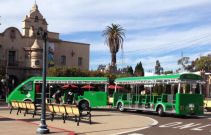
Let us take you where you want to go by taking the free green tram. All trams are equipped with an ADA-accessible ramp for your convenience. Please ask the conductor for assistance.
You can get to the tram by driving or riding a City bus to "Inspiration Point," conveniently located at Park Boulevard and Presidents Way (parking lot on the south side of Park Boulevard). Inspiration Point provides ample parking and easy access to Tram Central, the starting point for the free tram transportation service. Tram Central offers benches and shade to Balboa Park visitors.
Every day and every 10 to 15 minutes, the tram will stop at Tram Central to pick up and drop off Park visitors. Summer hours of operation are from June 1 through Oct. 31, daily from 9 a.m. to 8 p.m. Fall/winter hours of operation are from Nov. 1 through May 31, daily from 9 a.m. to 6 p.m. The last pickup from Tram Central will be 15 minutes prior to the end of tram operations for each day.
The tram makes its way through the Park, stopping at most of its most popular destinations: the Plaza de Panama (in front of The Prado), the Spreckels Organ Pavilion and the Pan American Plaza (Palisades Lot).
Information about Balboa Park's buildings and gardens and park brochures are available at the Visitor Center, located in the House of Hospitality (Plaza De Panama Stop), the first stop from Inspiration Point. The Free Tram does not operate for special events and City holidays.
Tram Operation is subject to delayed start times due to scheduled events in Balboa Park.
For more information, please call 619-235-1100.
Discover the wonders of Balboa Park and save money! Park Annual Passes, One Day, Multi-Day Explorer and Multi-Day Pass/Zoo Combos can be purchased online at Balboa Park Explorer. Explorer passes can also be purchased within Balboa Park at participating museums and the Balboa Park Visitors Center.
For information on group sales, please call 619-232-7502, Ext. 1208. For general information, please call 619-232-7502, Ext. 1204.
Some museums may offer complimentary admission to their permanent collections only and charge admission to special exhibitions, showings and events. Please call individual museums for information.
Park museums offer free general admission on a rotating basis throughout each month to residents of the City and County of San Diego and to active military personnel and their dependents.
Some museums may offer complimentary admission to their permanent collections only and charge admission to special exhibitions, showings and events. Please call individual museums for information.
An architectural tour is offered on the first and third Friday of each month at 11 a.m. Tours meet at the Balboa Park Visitors Center. For more information, call 619-239-0512, Ext. 8.
The Balboa Birders are volunteers who lead monthly birding tours in parks, marshes, and canyons in and around Balboa Park and neighboring communities. Birders meet the first Thursday of every month from 7:30 to 9:30 a.m. Locations vary. For more information, call 619-232-3821, Ext. 7.
Canyoneers Guided Nature Walks
The Natural History Museum's Canyoneers are volunteer naturalists trained in local flora, fauna, and geology. They lead weekend nature walks from September through July in San Diego County's mountain, canyon, lagoon and desert habitats. Walks range from one and a half hours to six hours and are generally of moderate distance (1 to 6 miles) and difficulty. For more information, call 619-232-3821, Ext. 7.
Forever Balboa Park is a public benefit 501(c)3 nonprofit organization that provides expertise, advocacy and resources to envision, enhance and sustain Balboa Park for all visitors in partnership with the City of San Diego and other organizations in the Park and the community. They offer free public tours of Central Mesa on Tuesdays and the second, fourth and fifth Friday of the month at 11 a.m. in front of the Visitors Center. Filled with amusing anecdotes, little-known facts, and eye-fulls of gorgeous scenery, the 11 a.m. tours are the perfect complement to a day exploring other free cultural offerings. For more information, call 619-239-0512, Ext. 8.
House of Pacific Relations Lawn Programs
Offered every Saturday by volunteer horticulturists, the tours meet in front of the Park's Visitor Information Center at 10 a.m. for a one-hour walk. Tour themes include Balboa Park history (first Saturday of the month), palm trees (second Saturday), other trees in the Park (third Saturday), desert vegetation (fourth Saturday), and every fifth Saturday offer the "tour del dia" (exploring the Park Palisades area). Inclement weather or attendance of fewer than four people cancels the tour. Offshoot Tours run from the second Saturday in January through the Saturday before Thanksgiving. Sponsored by the Balboa Park Rangers. For more information, call 619-235-1122.
Tours are available upon request. Call the Park Rangers’ Office at 619-235-1122.
Spreckels Organ Pavilion Concerts
The Spreckels Organ Pavilion, housing the world's largest outdoor pipe organ, was donated to the City of San Diego by brothers John D. and Adolph Spreckels in 1914 for the Panama-California Exposition. The pavilion area provides comfortable seating for 2,400 with wheelchair access. Free year-round organ concerts featuring Artistic Director and San Diego Civic Organist Raúl Prieto Ramírez are held on Sundays from 2 to 3 p.m. Each year, a free summer International Organ Festival is held from mid-June through August on Monday evenings at 7:30 p.m. For more information, call 619-702-8138.



